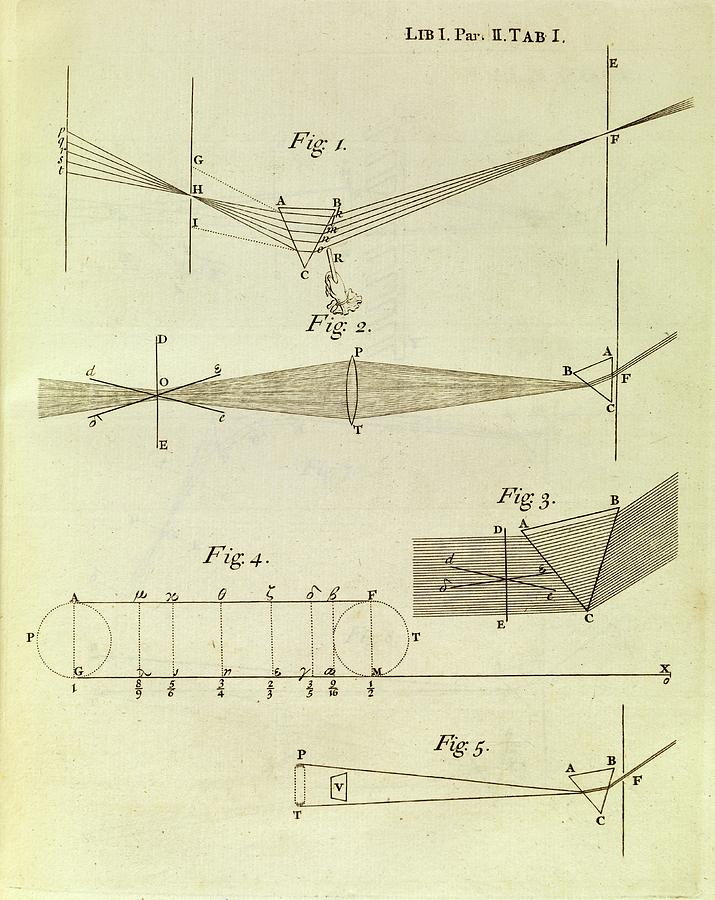
It does not prove its propositions by the use of ratios or equations, by the use of fluxions, or the tools of mathematics. Second, unlike the Principia, it is not presented in a strictly geometric form, with propositions proved by mathematics from either previous propositions or lemmas or first principles (or axioms). First of all, it is written in English rather than Latin. The Opticks differs in many aspects from the Principia. His experiments on these subjects and on the problems of diffraction (which he never fully mastered) set the subject of optics on a new level. He shows how colors arise from selective absorption, reflection, or transmission of the various component parts of the incident light. In this book Newton sets forth in full his experiments, first reported in 1672, on dispersion, or the separation of light into a spectrum of its component colors.

Rather, the Opticks is a study of the nature of light and color and the various phenomena of diffraction, which Newton called the "inflexion" of light. That is, this work is not a geometric discussion of catoptrics or dioptrics, the traditional subjects of reflection of light by mirrors of different shapes and the exploration of how light is "bent" as it passes from one medium, such as air, into another, such as water or glass. The Opticks is largely a record of experiments and the deductions made from them, covering a wide range of topics in what was later to be known as physical optics. This work represents a major contribution to science, different from-but in some ways rivaling-the Principia. The second of Newton's major writings on physical science was the Opticks, first published in 1704.

It about optics and the refraction of light, and is considered one of the great works of science in history.Įven if Newton had not made his better-known discoveries concerning gravity and the invention of the calculus, Opticks would have given him the reputation as one of the greatest scientists of his time. Opticks is a book written by English physicist Isaac Newton that was released to the public in 1704. Opticks or a treatise of the reflections, refractions, inflections and colours of light


 0 kommentar(er)
0 kommentar(er)
